Did you know that by simply brushing, you’re only getting 50% of the job done? That’s because when you brush the bristles can only reach 60% of your tooth’s surface. That means 20% between your teeth is a hot spot for bacteria that causes cavities and gum disease. When you don’t floss it gives the bacteria longer to build up and bind with your teeth creating a firm sticky substance known as plaque. Flossing, however, removes those food particles before they can harden into tartar, also known as calculus, which cannot be removed by regular flossing. After the tartar begins to build up it will take over the surface of the tooth under the gum line. Once there, tartar causes inflammation and irritation that leads to the development of gum disease.
When to Floss
Now that we know why we should floss; do you know why only 4 in 10 Americans floss every day? The largest percent says that it’s too time-consuming but once you get the hang of it, flossing takes just a couple minutes. Since we only floss once a day, it’s recommended to do it before you brush. When you floss after brushing all the loose plaque and bacteria floats around your mouth, giving it the chance to reattach to the tooth’s surface. So, at the very least, rinse your mouth.
How to Floss
We’ve got the basics down, why it’s important to floss, and when we should floss. Can you guess what’s next? That’s right, the correct way to floss. If you are flossing every day and still see a lot of plaque buildup, chances are you’re missing some crevices. When you floss incorrectly it can cause bleeding and damage to your gums and any surrounding dental work. Now before we get into the proper ways to floss, we really need to go over the different types of floss and what they are used for.
Types of Floss
- Floss can come waxed or unwaxed and everyone can use it! It’s great to get those food particles in tight spaces. Typically, it comes rolled up in a small plastic box. Which makes flossing on the go much easier!

- Dental Tape: This is similar to regular floss where it comes in either waxed or unwaxed. However, dental tape is much wider than floss and can clean more surface. If you have bigger hands or more space between your teeth, it’s recommended to use this.
- Floss Picks: Are small plastic flossing sticks that are somewhat shaped like a candy cane. Used in the same way regular floss is, floss picks make it easier for people with less dexterity and they are great for kids!
- Floss Threader: This is a firm stick with a loop at the end. It is used to thread the
 floss through dental appliances, which can make some teeth hard to reach. Typically, floss threaders are used with braces or bridges.
floss through dental appliances, which can make some teeth hard to reach. Typically, floss threaders are used with braces or bridges. - Interdental Brush: This is a pick with wired or non-wired bristles at the tip. These can be used for regular flossing; however, they are also useful in cleaning dental implants and braces.
- Superfloss: Has a floss threader at one end, regular floss in the middle, and a soft spongy floss at the other end. The thread is used to pull the floss between an appliance then the regular floss is used on the adjacent tooth. The spongy floss is then used to clean around an implant-supported bridge or under a normal bridge.
- Wooden Plaque Remover: Looks a lot like a toothpick but it has a tapered end with a triangular shape. Set the tapered end in your mouth for a few seconds to soften it. Then place the softened side between your teeth with the flat side on your gums. This is to stimulate blood flow which helps fight gum disease. Gently move the pick in and out to break up any food particles and disturb any forming plaque. This can be used by anyone and is preferable for flossing on the go.
- Water Flosser: The water flosser is a different type of device known as an oral irrigator. Instead of manually scraping the plaque off, the water pressure does it for you! If you have braces it’s an easy way to make sure you are fully cleaning those pearly whites, however, anyone can use a water flosser.
How Really to Floss
- Flossing: Pull 18-20 in of floss from the container, then loosely wrap it around both middle fingers. Make sure to leave at least 1-2 in of floss in the middle. Hold the floss taut with your thumb and index fingers and glide it gently up and down the side of your teeth. When you get to the gum line form a C-shape and slide the floss down. Finally, remove the floss and continue with the same method on the rest of your teeth.
- Flossing with Braces: It’s recommended that you use waxed floss to avoid getting strands stuck in the brackets. Pull 18-24 in of waxed floss out of the container, thread it through the floss threader and carefully pull it through the wire; then continue to floss as normal. You can also use interdental brushes by pushing the bristles in an out 2-3 times for every tooth.
- Flossing Dental Implants: Since implants can’t decay the plaque will still stick which can cause swelling and implant failure known as Peri-implantitis. This means it is still vital to floss around your implant. Use a non-wired interdental brush to avoid scratching the titanium or porcelain. Gently push it in and out 2-3 times, then continue to floss the rest of your teeth.
- Flossing a Dental Bridge: Start by pushing the threader end of Superfloss through the space between the bridge and the real tooth. Use the regular floss on the real tooth, then gently slide the super floss under the bridge 2-3 times and repeat on the other side. After, floss the rest of your teeth normally.
- Flossing Implant-Supported Bridges: Use Superfloss to thread the spongy floss under the bridge, and gently use the spongy side to clean around the titanium implants. You can also use a non-wired interdental brush to clean them.
- Flossing and Cleaning Implant-Supported Overdentures: Remove the dentures from your mouth, brush the dentures with detergent and place them in water. Then take a one-tuff brush and gently clean around the part of the implant that sits above your gums, commonly known as an abutment.
Flossing is simple, yet so crucial for your dental health. Remember, the floss most dentists recommend is any type that you will use every day!
Dr. John Schulz, D.D.S.
Stonestown Medical Building
595 Buckingham Way, Suite 331
San Francisco, CA 94132 (map)



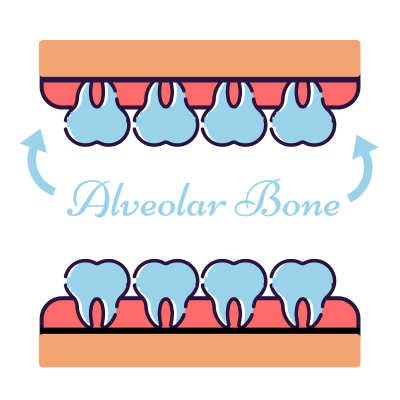 bone or the part of the jaw that holds teeth in the mouth. When we’re actively chewing or biting it stimulates the jawbone. This tells our brain to keep pumping calcium and other nutrients to stimulate bone growth. With tooth loss the bone no longer receives stimulation, the brain stops sending nutrients, and the bone begins to atrophy leading to that sunken jaw look.
bone or the part of the jaw that holds teeth in the mouth. When we’re actively chewing or biting it stimulates the jawbone. This tells our brain to keep pumping calcium and other nutrients to stimulate bone growth. With tooth loss the bone no longer receives stimulation, the brain stops sending nutrients, and the bone begins to atrophy leading to that sunken jaw look. begin to collapse. When this happens, it causes shifting of all the other teeth in your mouth. That can lead to further tooth loss and mouth deformation.
begin to collapse. When this happens, it causes shifting of all the other teeth in your mouth. That can lead to further tooth loss and mouth deformation.
 overall health. The ADA recommends that you brush gently, in short strokes, and at a 45-degree angle for 2 minutes. This prevents the bristles from removing the enamel that protects your teeth. When brushing the backs of your teeth, it’s best to turn the brush vertically and make multiple short strokes on every tooth.
overall health. The ADA recommends that you brush gently, in short strokes, and at a 45-degree angle for 2 minutes. This prevents the bristles from removing the enamel that protects your teeth. When brushing the backs of your teeth, it’s best to turn the brush vertically and make multiple short strokes on every tooth. still apply, chewy or sticky candy can get stuck in your brackets. The sugar then reacts with the bacteria in your mouth creating a white film around the brackets. This substance is nearly impossible to clean and can cause extended acid attacks and increases your risk of cavities.
still apply, chewy or sticky candy can get stuck in your brackets. The sugar then reacts with the bacteria in your mouth creating a white film around the brackets. This substance is nearly impossible to clean and can cause extended acid attacks and increases your risk of cavities.
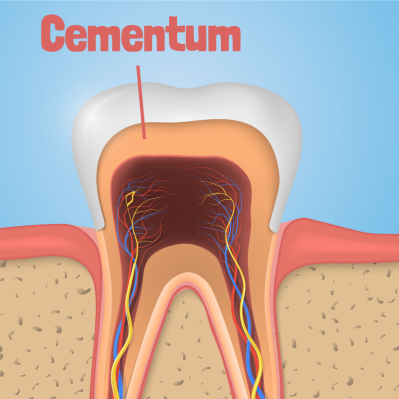 is quite similar except its responsibility lies beneath the gum line. The cementum covers and protects the roots as well as a more delicate layer of the tooth known as the dentin.
is quite similar except its responsibility lies beneath the gum line. The cementum covers and protects the roots as well as a more delicate layer of the tooth known as the dentin.
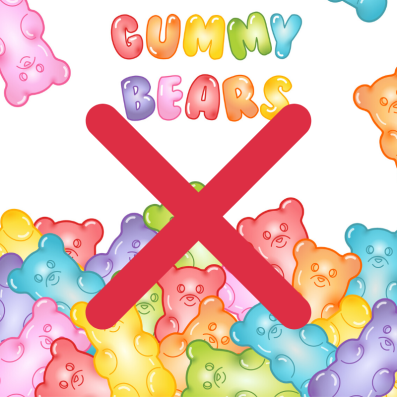 damage to your teeth. When you introduce that much sugar to your mouth, it binds with the bacteria and creates an acid that erodes your enamel. The safer option is chocolate or chocolate with nuts. Remember to rinse with water right after eating sweets and wait at least 30 minutes before brushing.
damage to your teeth. When you introduce that much sugar to your mouth, it binds with the bacteria and creates an acid that erodes your enamel. The safer option is chocolate or chocolate with nuts. Remember to rinse with water right after eating sweets and wait at least 30 minutes before brushing.

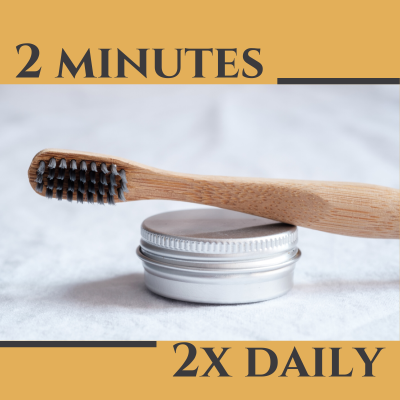 well as intact. When you go to bed without brushing you’re allowing the bacteria on your teeth to sit and harden all night. This can lead to plaque, tartar, and even gum disease. This is why it’s super important to brush your teeth in the morning and before you go to bed for at least
well as intact. When you go to bed without brushing you’re allowing the bacteria on your teeth to sit and harden all night. This can lead to plaque, tartar, and even gum disease. This is why it’s super important to brush your teeth in the morning and before you go to bed for at least  but it also puts you at a higher risk of tooth loss, developing gum disease, and oral cancer. Tobacco damages the gum line around your teeth leaving pockets where bacteria, plaque, and tartar easily build up. Once those pockets are festering, the bacteria starts to
but it also puts you at a higher risk of tooth loss, developing gum disease, and oral cancer. Tobacco damages the gum line around your teeth leaving pockets where bacteria, plaque, and tartar easily build up. Once those pockets are festering, the bacteria starts to 
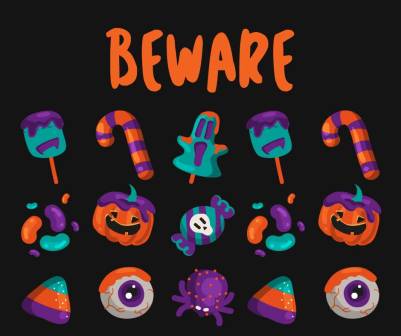 These “scary” candies can cause a whole monster of problems from enamel loss to tooth damage. The sticky/gummy candies adhere to your teeth giving the sugar time to seep into all those nooks and crannies. Hard candy sits in your mouth slowly coating your teeth in sugar and can crack or break teeth as you chew them. The sour candies are super acidic and break down the enamel, weakening your teeth and making them more susceptible to
These “scary” candies can cause a whole monster of problems from enamel loss to tooth damage. The sticky/gummy candies adhere to your teeth giving the sugar time to seep into all those nooks and crannies. Hard candy sits in your mouth slowly coating your teeth in sugar and can crack or break teeth as you chew them. The sour candies are super acidic and break down the enamel, weakening your teeth and making them more susceptible to  luckily our saliva is a base, so it helps prevent and restore some of the damage done in a process called remineralization.
luckily our saliva is a base, so it helps prevent and restore some of the damage done in a process called remineralization.
 bacteria. More bacteria can lead to tooth decay, cavities, and
bacteria. More bacteria can lead to tooth decay, cavities, and  bloodstream and can travel to your arteries. Arteries are blood vessels that distribute oxygen from your heart to your body. This can lead to atherosclerosis where plaque builds up on the inner layers of your arteries. This can cause clots that can block blood flow through your body. Increasing the likelihood of suffering a heart attack or stroke.
bloodstream and can travel to your arteries. Arteries are blood vessels that distribute oxygen from your heart to your body. This can lead to atherosclerosis where plaque builds up on the inner layers of your arteries. This can cause clots that can block blood flow through your body. Increasing the likelihood of suffering a heart attack or stroke.
 brushing and flossing cannot remove tartar, only a dental professional can. Fun fact: 68 percent of adults have tartar! They even deposit faster with age!
brushing and flossing cannot remove tartar, only a dental professional can. Fun fact: 68 percent of adults have tartar! They even deposit faster with age! small mouths.
small mouths.
